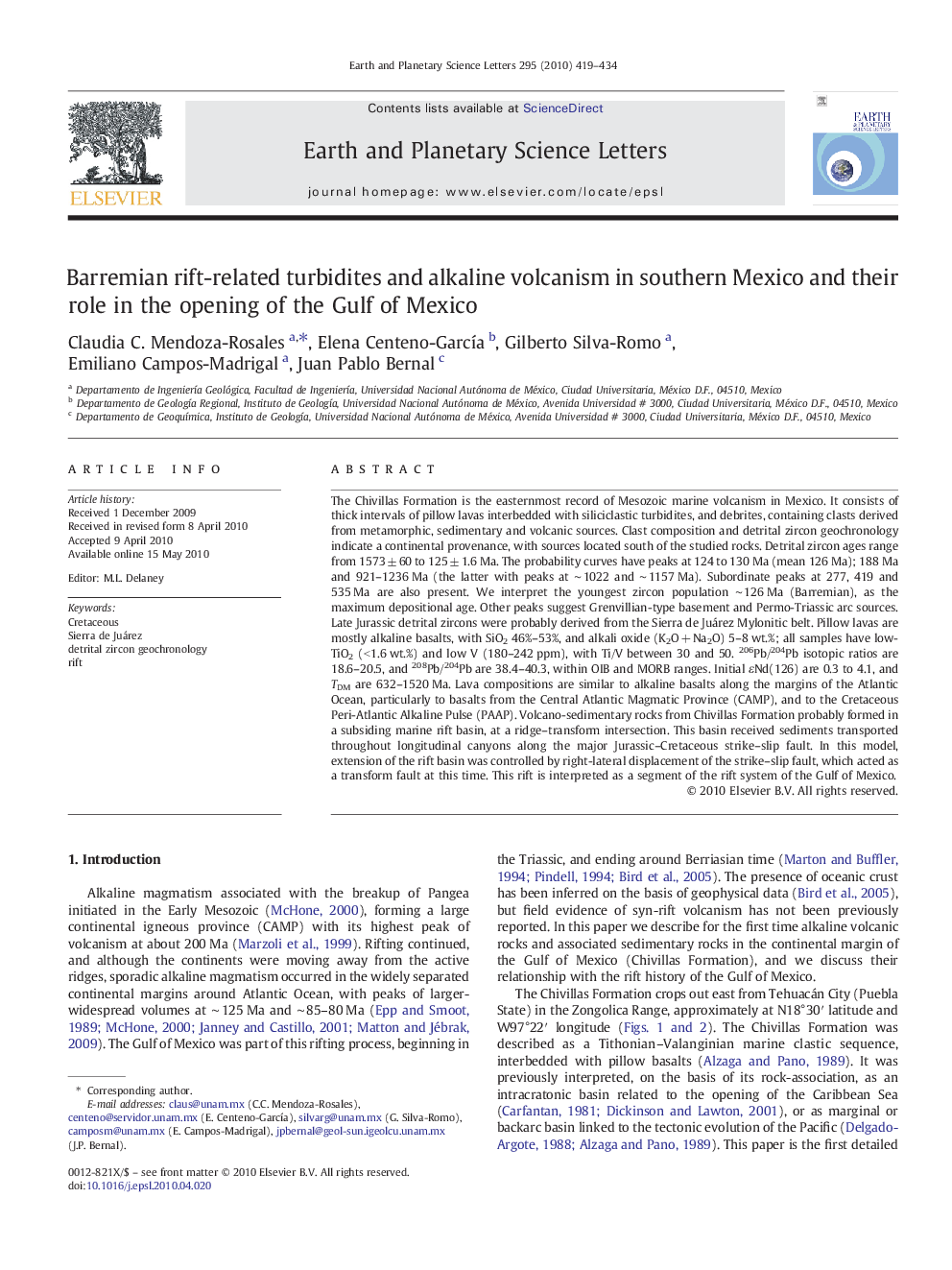| کد مقاله | کد نشریه | سال انتشار | مقاله انگلیسی | نسخه تمام متن |
|---|---|---|---|---|
| 4678607 | 1634849 | 2010 | 16 صفحه PDF | دانلود رایگان |

The Chivillas Formation is the easternmost record of Mesozoic marine volcanism in Mexico. It consists of thick intervals of pillow lavas interbedded with siliciclastic turbidites, and debrites, containing clasts derived from metamorphic, sedimentary and volcanic sources. Clast composition and detrital zircon geochronology indicate a continental provenance, with sources located south of the studied rocks. Detrital zircon ages range from 1573 ± 60 to 125 ± 1.6 Ma. The probability curves have peaks at 124 to 130 Ma (mean 126 Ma); 188 Ma and 921–1236 Ma (the latter with peaks at ∼ 1022 and ∼ 1157 Ma). Subordinate peaks at 277, 419 and 535 Ma are also present. We interpret the youngest zircon population ∼ 126 Ma (Barremian), as the maximum depositional age. Other peaks suggest Grenvillian-type basement and Permo-Triassic arc sources. Late Jurassic detrital zircons were probably derived from the Sierra de Juárez Mylonitic belt. Pillow lavas are mostly alkaline basalts, with SiO2 46%–53%, and alkali oxide (K2O + Na2O) 5–8 wt.%; all samples have low-TiO2 (< 1.6 wt.%) and low V (180–242 ppm), with Ti/V between 30 and 50. 206Pb/204Pb isotopic ratios are 18.6–20.5, and 208Pb/204Pb are 38.4–40.3, within OIB and MORB ranges. Initial εNd(126) are 0.3 to 4.1, and TDM are 632–1520 Ma. Lava compositions are similar to alkaline basalts along the margins of the Atlantic Ocean, particularly to basalts from the Central Atlantic Magmatic Province (CAMP), and to the Cretaceous Peri-Atlantic Alkaline Pulse (PAAP). Volcano-sedimentary rocks from Chivillas Formation probably formed in a subsiding marine rift basin, at a ridge–transform intersection. This basin received sediments transported throughout longitudinal canyons along the major Jurassic–Cretaceous strike–slip fault. In this model, extension of the rift basin was controlled by right-lateral displacement of the strike–slip fault, which acted as a transform fault at this time. This rift is interpreted as a segment of the rift system of the Gulf of Mexico.
Journal: Earth and Planetary Science Letters - Volume 295, Issues 3–4, 1 July 2010, Pages 419–434